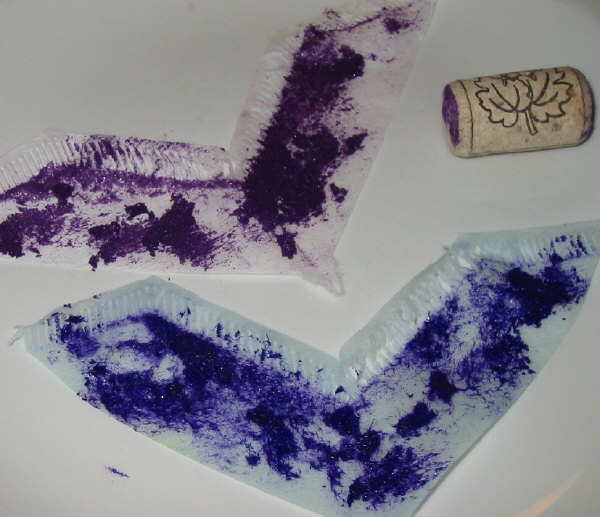Originally posted by Axt
OK, just got some ethylenediamine, since chemoleo has reported that the persulphate precipitates easily from solution (relative to the amine) my
thoughts were that the more energetic complexes may be easily isolated from an aqueous solution as well.
TACB is very sensitive, 2.5x more sensitive to impact then MF, but it can't be made in aqueous solutions. It wont precipitate nor can it be
evaporated out without losing its NH3. So I set out to attempt Bis(ethylenediamine)copper (II) bromate. But alas, it doesnt precipitate, maybe I was
being a bit optimistic especially with the S2O4 in solution. So I tried evaporating it out. Its been 40°C outside the last few days, so no problem
getting it dry.
The extract explodes with a bang in nearly any amount. 1/4 matchhead worth will sound like a cap gun when ignited in the open, even though its half
composed of the sulphates.
Na2SO4 seems to be the first thing to precipitate in ethanol, so this looks like the way to get the relatively pure bromate complex.
The bromate/sulphate extract explodes at a drop of 0-5cm (comparable with the peroxides), but doesnt seem sensitive to friction. Its been sitting in
the sun for 3 days now with no decomposition.
There is a <a href="http://www.geocities.com/roguemovies7/index.html">movie</a>, but its only 0.2g ignited in open.
|




 .
. 


 It has been sitting in the hot sun this whole time, so that cant help, but its probably
too unstable to have any uses.
It has been sitting in the hot sun this whole time, so that cant help, but its probably
too unstable to have any uses.




 , I
never noticed a green flame from the ammonia complex, have to make it again just to see it. At least they have novelty value.
, I
never noticed a green flame from the ammonia complex, have to make it again just to see it. At least they have novelty value.
 .
.


 without
burning...looks like it sublimates...
without
burning...looks like it sublimates...













 but
scientist are enless daydreamers
but
scientist are enless daydreamers 




 ........
........